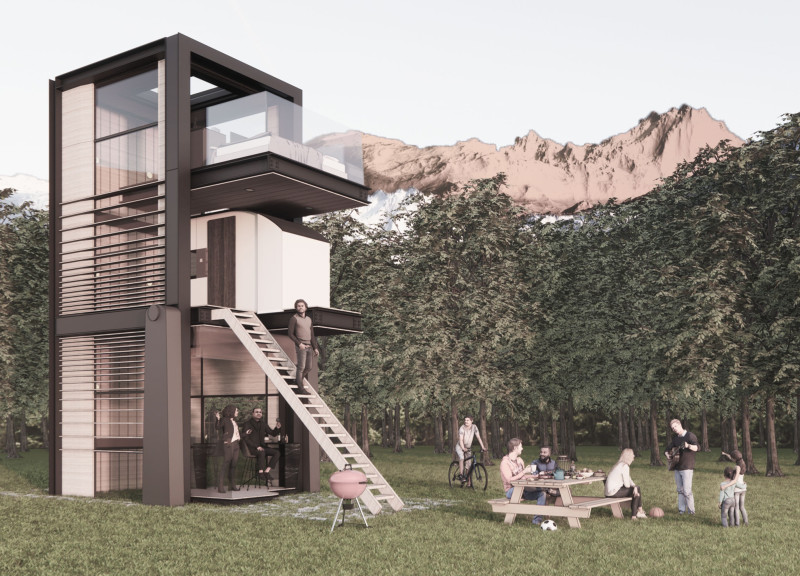5 key facts about this project
SWING HOUSE is an architectural design that addresses the need for both private and communal living spaces. Located in a natural environment, it focuses on blending indoor and outdoor areas, encouraging interaction with the surroundings. The aim is to redefine how these spaces connect, fostering a sense of community while maintaining individual privacy.
Dynamic Spatial Arrangement
The design features a three-story layout that is derived from a horizontal space. This layout allows for different functions while adapting to the needs of the occupants. The main structural support resembles a Ferris wheel, acting as both a frame and an axis for rotating the house. This flexibility creates opportunities for multi-functional living in a compact area.
Adaptive Forms
SWING HOUSE can take on three different configurations: Horizontal, Diagonal, and Vertical. In its horizontal form, the structure is elevated above the ground, which enhances security and protects against natural disasters like flooding. This elevation also allows for improved air circulation underneath, aiding thermal efficiency and increasing comfort during varying weather conditions.
Integration of Spaces
When in its vertical configuration, the living space merges with the outdoors, transforming the area from a traditional indoor setting to a garden-like experience. This change encourages social interactions and a variety of activities in a more open environment. In the diagonal form, the house gains a semi-open quality, allowing for airflow while still providing distinct private areas.
Materiality and Construction
The design incorporates selected materials such as wooden panels, wooden fins, insulation wool packing, wooden tile flooring, and glass railings. Each of these materials serves a specific purpose, contributing to both the aesthetics and the functionality of the home. Their use emphasizes sustainability and helps the building blend with its surroundings.
SWING HOUSE features a flexible design with rotating sections and integrated outdoor areas, highlighting an approach to living that focuses on adaptability and connection to nature.



















































